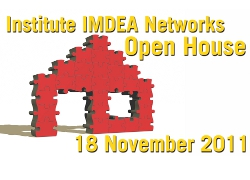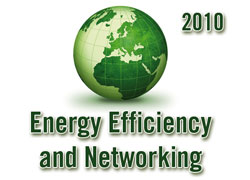IMDEA Networks

Archives: Events
Understanding the Detection of Fake View Fraud in Video Content Portals
While substantial effort has been devoted to understand fraudulent activity in traditional online advertising (search and banner), more recent forms such as video ads have received little attention.
Read more arrow_right_altScience and movie scientists: Does reality surpass fiction?
How do science and movies get along? Is it true that, most of the times, truth is stranger than fiction?
Read more arrow_right_altPhd Thesis defense: Analysis, Design and Experimental Evaluation of Connectivity Management in Heterogeneous Wireless Environments
The future of network communications is mobile as user's demand for ubiquitous connectivity increases. Wireless has become the primary access technology, leading to an explosion in traffic demand. This challenges network providers to manage and configure new requirements without incrementing costs in the same amount. In addition to the growth in the use of mobile devices, there is a need to operate simultaneously different access technologies.
Read more arrow_right_altWONS 2014 – The 11th IEEE/IFIP Annual Conference on Wireless On-demand Network Systems and Services
Providing secure, reliable, and dependable wireless services is the primary objective of modern data networks. While enabling technology for “on-demand” services through any of the common wireless architectures, such as WiMax, WiFi, ad hoc networks, sensor networks, and vehicular networks, has made large strides, many formidable challenges remain to be overcome, such as the integration of infrastructure-based and ad hoc networks, robust algorithms for self-organizing, reconfigurable wireless networks, on-demand service models and their performance in highly-volatile interconnect topologies as well as interoperability of different architectures.
Read more arrow_right_altNetwork Sharing: An Energy-Efficient Option For European Mobile Network Operators
We investigate the energy saving made possible by the network sharing approach, whereby all (or significant parts) of a network infrastructure are shared by different network operators. Our study reveals that in most European countries the amount of energy necessary to run mobile networks can be reduced by 35 to 60%.
Read more arrow_right_alte-Energy 2012, the Third International Conference on Future Energy Systems, Where Energy, Computing and Communication Meet
e-Energy is the third International Conference on Future Energy Systems, which is organized annually since 2010. Due to the increasing significance of power consumption in computing and networking, the goal of e-Energy is to bring together researchers, developers and practitioners working in this area to discuss recent and innovative results, as well as identify future directions and challenges. The continuing spread of Information and Communication Technology (ICT) has contributed much to the reduction of energy consumption in many areas of everyday life. Nevertheless ICT infrastructure continues to expand in capacity and reach, and needs to be more energy-efficient itself. Additionally, ICT can be used to optimize the production, transport and consumption of energy in other setups.
Read more arrow_right_altInstitute IMDEA Networks Open House 2011: Research and development
Why should I consider a future in research? What sort of opportunities does a PhD open up for me? What makes research in the science of networks such an exciting career choice? How can we ensure that the Internet can grow and adapt to ever-changing needs over the coming decades? What lies beyond the Internet? What inspires network research?
Read more arrow_right_altWOWMOM 2013, the 14th IEEE International Symposium on a World of Wireless, Mobile and Multimedia Networks
WoWMoM 2013 is the 14th IEEE International Symposium on a World of Wireless, Mobile and Multimedia Networks. WoWMoM addresses research challenges and advances towards a world of wireless, mobile, and multimedia pervasive communications.
Read more arrow_right_altACM e-Energy 2014 – The 5th International Conference on Future Energy Systems
Several members and stakeholders of IMDEA Networks Institute are leading the organization of ACM e-Energy 2014. Marco Ajmone Marsan and Antonio Fernández Anta are both long-standing researchers at the Institute. Two leading international figures in networking research, Jim Kurose from University of Massachusetts at Amherst (USA) and Jon Crowcroft, from University of Cambridge (UK), are both members of IMDEA Networks’ Scientific Council. Ajmone, Fernández Anta, and Kurose are Steering Committee members the ACM e-Energy conference, whereas Crowcroft is the General co-chair of the 2014 edition.
Read more arrow_right_alt2nd IMDEA Networks Annual International Workshop: Energy Efficiency and Networking
IMDEA Networks is organizing its 2nd Annual International Workshop, this year focusing on Energy Efficiency and Networking on 31st May - 1st June, 2010 in Madrid, Spain. The workshop will include presentations and a panel dealing with the latest advances and challenges facing the field. Energy efficiency is becoming one of the most important issues of our time. Population growth and exhaustion of available energy sources makes clever use of energy one of the main challenges for our society. The objective of this workshop is to explore the role of networking in the general effort towards sustainable use of energy.
Read more arrow_right_alt











Recent Comments